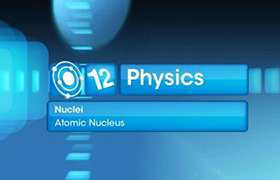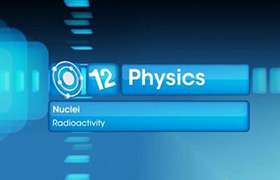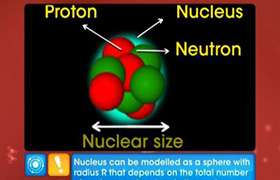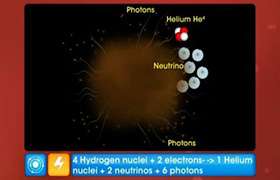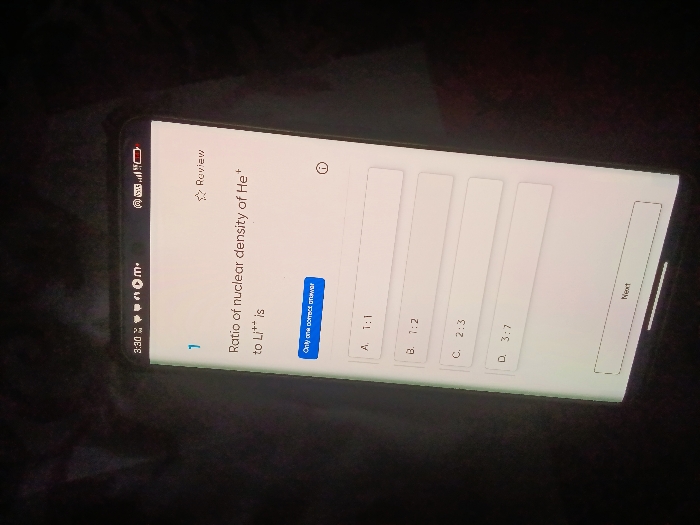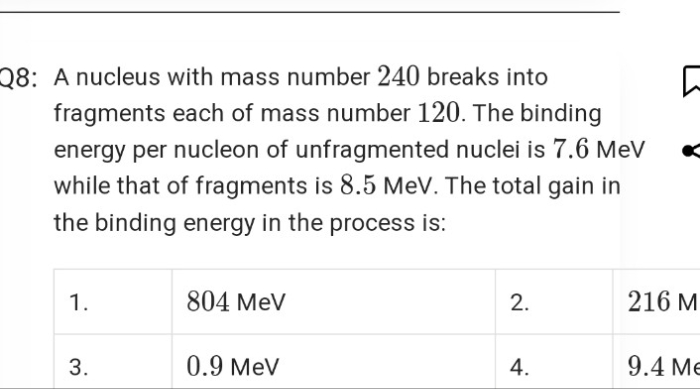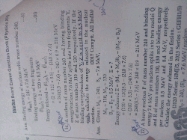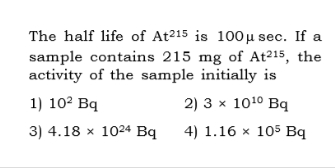Alpha decay occurs when the nucleus of an atom spontaneously ejects an alpha particle. The alpha particle is the same as a helium nucleus with 2 protons and 2 neutrons. This means the number of protons in the nucleus is reduced by 2 and the total number of nucleons is reduced by 4.
241Am95 → ZXA + 4He2
A = number of protons = 95 - 2 = 93
X = the element with atomic number = 93
According to the periodic table, X = neptunium or Np.
CBSE Class 12-science Answered
explain the reaction during the alpha and beta decay? give reason
Asked by mohitgehlot | 28 Feb, 2011, 02:51: AM
Dear student,
During alpha decay, the number of protons and neutrons of the daughter nucleus decreases by two. But during beta decay, a neutron is converted into a proton and thus the atomic number increases. That is, the number of protons increases.
β- decay occurs when a neutron converts into a proton and ejects an energetic electron called the beta particle. This means the the number of neutrons, N, is reduced by 1 and the number of protons, A, is increased by 1 on the daughter atom.
138I53 → ZXA + 0e-1
A = number of protons = 53 + 1 = 54
X = the element with atomic number = 54
According to the periodic table , X = xenon or Xe
The mass number, A, remains unchanged because the loss of one neutron is offset by the gain of a proton.
138I53 → ZXA + 0e-1
A = number of protons = 53 + 1 = 54
X = the element with atomic number = 54
According to the periodic table , X = xenon or Xe
The mass number, A, remains unchanged because the loss of one neutron is offset by the gain of a proton.
Hope this helps.
thanking you
Team
Topperlearning.com
Answered by | 28 Feb, 2011, 10:01: AM
Concept Videos
CBSE 12-science - Physics
Asked by mohapatraswetalina88 | 21 Apr, 2024, 12:18: PM
CBSE 12-science - Physics
Asked by rohandhawaniya17112006 | 06 Mar, 2024, 03:32: PM
CBSE 12-science - Physics
Asked by murshidibrahimkk | 08 Feb, 2024, 10:28: AM
CBSE 12-science - Physics
Asked by kailasks2007 | 28 Dec, 2023, 08:14: PM
CBSE 12-science - Physics
Asked by varma.renu9481 | 06 Mar, 2023, 05:44: PM
CBSE 12-science - Physics
Asked by arjunsah797 | 16 May, 2022, 02:17: PM
CBSE 12-science - Physics
Asked by akashjyani705 | 06 Mar, 2022, 04:39: PM
CBSE 12-science - Physics
Asked by sharonashoksp | 27 Jun, 2021, 02:44: PM
CBSE 12-science - Physics
Asked by gaurish6247 | 07 Apr, 2021, 05:16: PM
CBSE 12-science - Physics
Asked by merinlijo_20002 | 17 Jun, 2020, 10:05: AM

